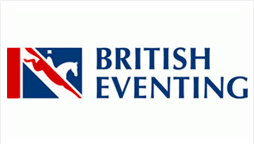Eventing
Eventing, sometimes referred to as 'horse trials', is a unique combination of three phases – dressage, cross-country over fixed fences and show-jumping.
Each of the three phases is designed to test the horse's ability...
- Dressage is always the first phase. Horse and rider perform a series of set movements, with each one scored out of 10 by a judge and combined at the end to produce a penalty score. This phase can either be held on grass or in an arena
- The showjumping phase requires athleticism, control and accuracy from both horse and rider over a course of knockable fences in a set sequence. The aim is to jump all the fences in order, with penalties awarded if combinations knock a pole down, a horse refuses at a fence or they go over the time allowed. If a combination jumps all the fences correctly within the time, this is called a clear round. This phase is held on grass or in an arena
- The cross-country phase tests stamina, speed, jumping and bravery, withfences made from wood that don't easily fall down if knocked. The course will often include a water jump, which may have to be jumped into or ridden through at the lower levels. The aim is to jump all the fences in order and with no refusals, within the set 'optimum' time – penalty points will be accrued for refusals and run-outs at a fence, or exceeding the optimum time or running too fast. This phase is run on grass and goes across the country with the course normally taking advantage of the natural contours of the land.
The sport is rather like the triathlon in that it combines different disciplines in one competition and is run on a cumulative penalty basis – the competitor with least penalties at the end is the winner. If someone gets a clear round in both showjumping and cross-country, this is called a ‘double clear’ and means the combination would finish on the penalties they received for their dressage score.
If an event is held over a single day, known as a 'one-day event', the order of the phases are dressage, showjumping and cross-country. For bigger events held over three or four days, known as 'three-day events' regardless of the number of days, the order is changed to dressage, cross-country and showjumping.
In the UK, the eventing season runs from March to October every year. British Eventing (BE) is the national governing body for the sport of eventing in the UK. There are many different membership options – competitors can join in the year of their 12th birthday and there's no upper age limit.
At national events run by BE, horses and riders are able to progress through the different levels of competition on offer. These start with BE80 Training – often written BE80(T) – a competition where the maximum height of the fences is 80cm, and where there is a coach on hand to help you if you need it and to take groups of riders to walk the showjumping and cross-country courses. The next levels of increasing height and complexity are BE90, BE100, Novice, Intermediate and Advanced. BE80(T) to BE100 are often termed ‘grassroots’.
BE also run a comprehensive regional programme of training for both members and non-members, in addition to running a national framework of competition for riders under 21.
Competitors don’t need to be full members to take part, both day or training/club tickets are available for those who just want to have a go and try the sport.
